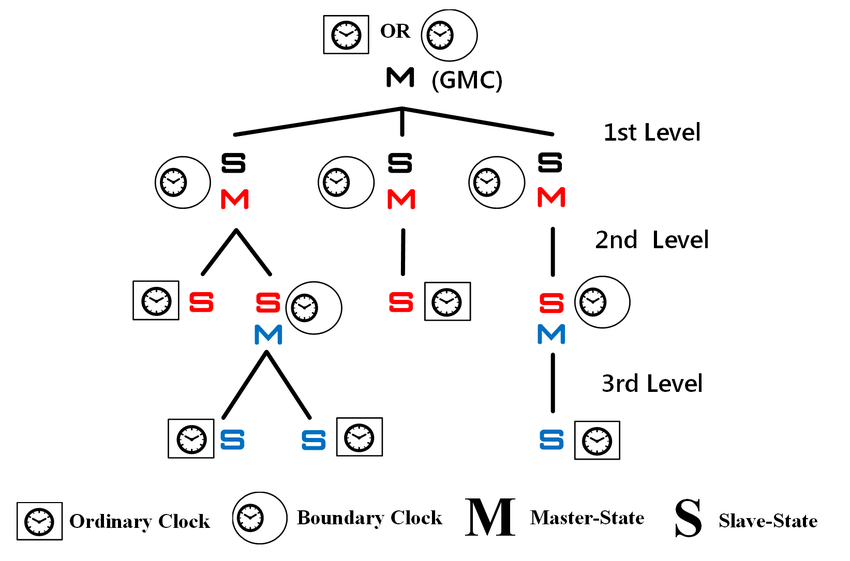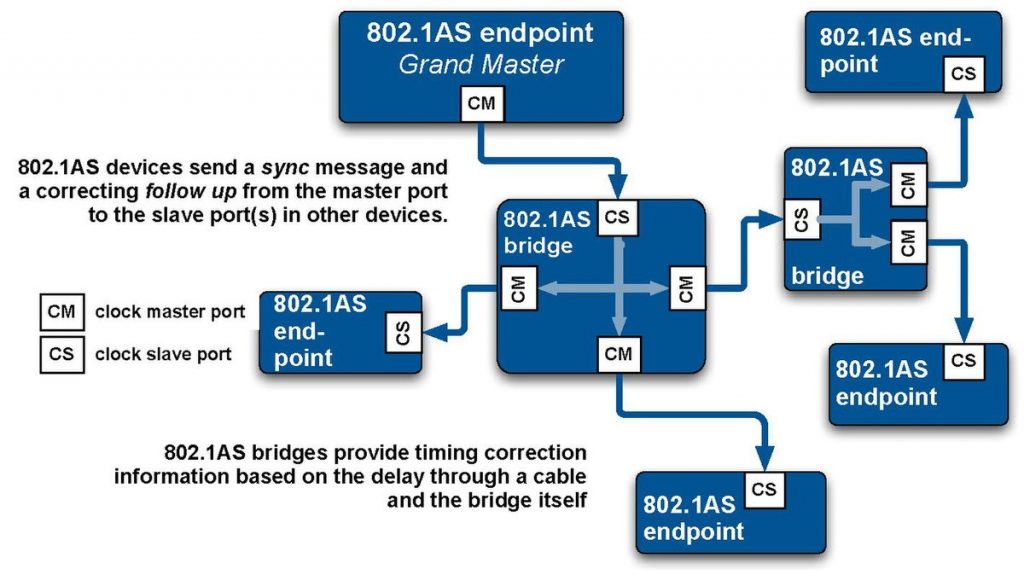Welcome to the world of industrial networks, where precision and efficiency reign supreme! In this fast-paced realm, every millisecond counts, making network synchronization an absolute must. Whether you’re working with data-intensive applications or managing complex automation systems, ensuring perfect timing is crucial for seamless operations.
But fear not, industrious readers! We’ve got you covered in unraveling the mysteries of network synchronization. Today, we’ll dive into a comparative analysis of four popular synchronization methods: NTP, PTP, TSN, and EtherCAT. So grab your digital hard hats and let’s explore how these technologies keep those industrial networks ticking in perfect harmony!

What is Network Synchronization?
In the world of industrial networks, synchronization refers to the process of aligning various devices and systems within a network to operate in perfect harmony. Picture a symphony orchestra playing a complex piece of music – each musician must follow the conductor’s lead and play their instrument precisely on cue. Similarly, network synchronization ensures that all devices within an industrial network are operating on the same time scale, enabling seamless communication and coordination.
At its core, network synchronization is all about precision timing. It involves setting up a common time reference across multiple devices so that they can exchange data accurately and reliably. This becomes especially critical when dealing with time-sensitive applications such as real-time control systems or high-speed data transfers.
Without proper synchronization, glitches in communication can occur, leading to delays, errors, or even system failures. Imagine the chaos that would ensue if different components of an automated assembly line were not perfectly synchronized – production would be disrupted, causing costly downtime and potential safety hazards.
Different methods have been developed over time to achieve effective synchronization in industrial networks. These methods vary in their level of accuracy and suitability for specific applications. In our quest for knowledge today, we will explore four prominent approaches: NTP (Network Time Protocol), PTP (Precision Time Protocol), TSN (Time-Sensitive Networking), and EtherCAT (Ethernet for Control Automation Technology). So buckle up as we embark on this synchronizing journey!
NTP (Network Time Protocol)
NTP (Network Time Protocol) is a common method used for synchronizing clocks in computer systems and networks. It allows devices to accurately maintain time by constantly adjusting their internal clocks based on the information received from NTP servers.
In industrial networks, where precise timing is crucial, NTP plays a vital role in ensuring synchronization across various devices and applications. By providing accurate timestamps, it enables smooth coordination of processes and data exchange within the network.
NTP works hierarchically with several server levels, called strata. The lower the stratum number, the closer the server is to an authoritative time source. This ensures that time information propagates efficiently throughout the network hierarchy.
One advantage of using NTP is its wide availability and compatibility with different operating systems and devices. It can synchronize both local area networks (LANs) as well as wide area networks (WANs), making it suitable for diverse industrial environments.
However, despite its widespread use, NTP has limitations when it comes to achieving ultra-precise timing requirements demanded by certain industrial applications. For those scenarios, other protocols like PTP or TSN may be more appropriate choices.
NTP is a reliable foundation for basic clock synchronization in industrial networks but may not meet all stringent timing demands required by advanced applications.
PTP (Precision Time Protocol)
When it comes to precise time synchronization in industrial networks, PTP (Precision Time Protocol) takes the spotlight. This protocol has gained popularity due to its ability to achieve microsecond-level accuracy, making it essential for applications that require strict timing requirements.
PTP operates on the principle of synchronizing clocks across a network by exchanging timestamped packets. It uses a master-slave architecture where one device acts as the grandmaster clock and others synchronize their time with it. The advantage of PTP is its ability to account for variable network delays, which ensures accurate synchronization even in dynamic environments.
One key aspect of PTP is its support for different profiles tailored towards specific industries. These profiles define parameters such as message transmission intervals and maximum allowed communication delay variations, ensuring optimal performance based on application requirements.
Moreover, PTP offers scalability as it can be implemented over Ethernet or other packet-based networks, allowing seamless integration into existing infrastructure without significant changes.
PTP stands out as a reliable solution for achieving precise time synchronization in industrial networks. Its flexibility and accuracy make it suitable for various applications where timing precision is crucial. As technology continues to advance, we can expect further enhancements in the capabilities and adoption of this protocol within industrial settings.

TSN (Time-Sensitive Networking)
TSN (Time-Sensitive Networking) is an emerging technology that aims to revolutionize industrial networks by providing deterministic and low-latency communication. Unlike traditional Ethernet networks, TSN incorporates time synchronization capabilities, making it ideal for applications where precise timing is crucial.
One of the key features of TSN is its ability to prioritize critical traffic over non-critical traffic. By using quality of service (QoS) mechanisms, TSN ensures that time-sensitive data packets are delivered within a guaranteed latency, while still allowing for the coexistence of other network traffic.
In addition to its determinism and low latency, TSN also offers seamless interoperability with existing Ethernet infrastructure. This means that companies can easily integrate TSN into their current systems without requiring significant changes or investments in new hardware.
Another advantage of TSN is its scalability. With the increase in connected devices and data-intensive applications in industrial settings, having a network that can handle large amounts of data efficiently becomes vital. TSN’s ability to support high bandwidths makes it suitable for these demanding environments.
Furthermore, TSN provides fault tolerance through redundancy mechanisms such as redundant paths and duplicate frames. This ensures reliable communication even in the presence of failures or network congestion.
Time-Sensitive Networking holds significant promise for enhancing the performance and efficiency of industrial networks by offering deterministic communication with low latency and improved reliability. As industries continue to embrace digitalization and automation, adopting technologies like TSN will become essential for ensuring smooth operations and maximizing productivity.

Source:https://en.wikipedia.org/wiki/Time-Sensitive_Networking
EtherCAT (Ethernet for Control Automation Technology)
EtherCAT (Ethernet for Control Automation Technology) is a high-performance industrial Ethernet solution that has gained popularity in recent years. It stands out among other synchronization methods due to its unique characteristics and capabilities.
One of the key advantages of EtherCAT is its ability to achieve real-time communication with extremely low latency. Unlike traditional Ethernet, which uses a master-slave configuration, EtherCAT operates on a distributed clock principle. This allows data to be processed simultaneously by multiple devices, enabling faster response times and improving system performance.
Another notable feature of EtherCAT is its flexible topology. It supports both linear and ring topologies, allowing for easy integration into existing network infrastructures. Additionally, EtherCAT devices can communicate directly with each other without the need for intermediate switches or routers, reducing complexity and cost.
In terms of scalability, EtherCAT offers excellent expandability options. New devices can be seamlessly added to an existing network without interrupting ongoing operations. This makes it ideal for large-scale industrial applications where new equipment needs to be integrated frequently.
Furthermore, EtherCAT provides deterministic communication through precise synchronization between devices in the network. By using distributed clocks and synchronizing their local timebases with nanosecond accuracy, all nodes within an EtherCAT network can operate in perfect harmony.
EtherCAT offers numerous advantages that make it a preferred choice for many industrial networks requiring real-time communication and precise synchronization capabilities.
Comparison of NTP, PTP, TSN, and EtherCAT
NTP (Network Time Protocol) is a widely used method that allows devices on a network to synchronize their clocks. It relies on the internet for time references and offers reasonable accuracy for most industrial applications.
PTP (Precision Time Protocol), on the other hand, provides highly accurate synchronization by using hardware timestamps and precise clock calculations. This makes it suitable for time-critical applications where millisecond-level precision is required.
TSN (Time-Sensitive Networking) is an emerging technology that aims to provide deterministic communication over standard Ethernet networks. It combines various techniques such as scheduling algorithms and traffic shaping to ensure timely delivery of critical data.
EtherCAT (Ethernet for Control Automation Technology) is another option specifically designed for real-time control systems. It uses a master-slave architecture with distributed clocks to achieve high-speed communication with low latency.
Each of these synchronization methods has its own advantages and disadvantages depending on the specific requirements of your industrial network. Factors like cost, complexity, accuracy needs, scalability, and compatibility should be considered when choosing the most suitable option for your application. So take the time to evaluate these options before making a decision!
Factors to Consider when Choosing a Synchronization Method
When it comes to choosing the right synchronization method for your industrial network, there are several factors that you should consider. Each method has its own strengths and weaknesses, so it’s important to assess your specific requirements before making a decision.
You need to evaluate the accuracy and precision needed for your application. If you require highly precise synchronization with sub-microsecond accuracy, PTP or TSN might be the best options for you. On the other hand, if slightly looser synchronization is acceptable and cost-efficiency is a priority, NTP may suffice.
Consider the scalability of the synchronization method. Will it be able to handle future expansions and additions? TSN offers excellent scalability due to its deterministic nature and ability to prioritize traffic. EtherCAT also provides good scalability by allowing multiple devices on a single Ethernet segment.
Think about interoperability with existing equipment in your network. Some methods like EtherCAT have their own dedicated hardware requirements which may not be compatible with all devices. PTP and NTP are more widely supported across different platforms and can easily integrate into existing networks.
Next, analyze the resilience of each synchronization method in terms of fault tolerance and redundancy capabilities. Industrial networks often operate in challenging environments where reliability is crucial. PTP has built-in redundancy features such as alternate mastership while TSN incorporates redundancy through redundant paths.
Don’t forget about ease of implementation and maintenance. Consider whether you have access to skilled personnel who can configure and manage complex protocols like PTP or TSN effectively. NTP requires minimal setup but may lack some advanced features offered by other methods.
In conclusion (without using those words), choosing the right synchronization method for your industrial network requires careful consideration of various factors including accuracy needed, scalability requirements, interoperability concerns, resilience against faults or failures as well as ease of implementation/maintenance capabilities available within your organization.






